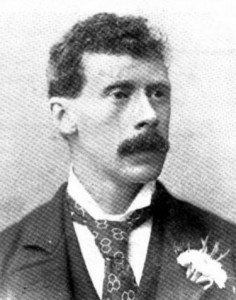By Lynda Russell-Whitaker
“Whenever you feel an impulse to perpetrate a piece of exceptionally fine writing, obey it – whole-heartedly – and delete it before sending your manuscripts to press. Murder your darlings”.
So said Sir Arthur Quiller-Couch in his inaugural lecture series in Cambridge (published in 1916). The expression ‘murder your darlings’ though has been attributed to several authors, including William Faulkner, Somerset Maugham and Agatha Christie.

It’s a provocative statement, and popular with advertising agency planners and copywriters too, who caution colleagues on the perils of verbosity. Well, it makes sense when you’re in the business of creating memorable slogans – Nike’s ‘Just Do It’ probably being one of the more potent and long-lasting examples of these.
‘Less is more’ is a philosophy – if I may call it such – that retailers (those in good old-fashioned bricks ‘n’ mortar) have employed for many years to market their goods. Perhaps it would be better-termed a psychology, as it is very much about the science of selling.
When I was an online consultant to Waitrose.com in their first year, I had the pleasure of meeting one very seasoned retail expert from their sister company, John Lewis. He explained the power of ‘Less is More’ with regard to window displays and the importance of keeping items to a minimum (three works well) to attract shoppers. Like Selfridges, Harrods and Harvey Nichols, John Lewis has won many awards for their window displays. They don’t just preach, they practise too!
I have heard echoes of the ‘less is more’ theme a number of times over the past few months, weeks and even days. Last month I attended a screening at the Curzon in SoHo of a short film directed by the talented (and award-winning) Marinella Setti. An accomplished piece of work, with a strong script and cast, however, what particularly struck me was how effective and evocative the use throughout of auditory and visual ‘space’ was.
We certainly recommend the use of such space to our clients. If there’s too much clutter in the written or spoken content, or its visual support, then it is very difficult for your audience to find the key points of your argument. If they are not able to distinguish these points, how will they be able to understand, let alone retell, these key points to an important colleague?
They will also struggle to differentiate you from your competition.
This is why we advise that you put the bulk of your data in the appendices, or in reference documents that can be digested and discussed after the communication has happened. Distil your key messages so that they can be heard (or read) by your audience (or reader), and received with the intended impact.
We are all tempted to include everything we’ve thought of saying all at once – and sometimes we put it all on the one PowerPoint slide. Resist!
Here’s an example of Less is More, using an extract from a Ginni Rometti speech in June 2010, with our alternative below:
“The world has changed a lot in past 2-3 years, as we’ve battled through the worst recession since the Great Depression. I see it every day, as I meet with those business and government leaders around the world. For starters, many of those government leaders themselves are new. We’re looking at new political regimes in many major countries around the world, not least of which is here in the U.S. Many of these new leaders bring with them new reform agendas, whether it’s healthcare reform, financial market reform, or environmental reform.“ (91 words)
“The world has changed a lot these past few years. We’ve battled the worst recession since the Great Depression; I see it daily, meeting business and government leaders around the world. Many of the leaders are new, bringing new political regimes worldwide, not least here in the US. Many of these leaders urge reform in healthcare, financial markets and the environment.”
(61 words)

Of course, it’s not just the written content, but (if it’s spoken communication) your delivery of that content, that is important. If you do so at breakneck speed, with no pauses for your audience to digest or process the information, then you lose a crucial opportunity – perhaps the only one when you’re speaking – to get across your important messages.
Pauses don’t always have to be dramatic, but leaving enough time after you make an important point, to allow people to process it, is critical. It’s very difficult for an audience to process information spoken at the average speech rate (130-160 per minute) at the same time as listening to that information. So pause to give them time to think!
Vanessa Friedman put it well, in her recent Financial Times article about the 2013 Milan Spring/Summer Collections. Commenting on the approach being taken by the Italian designers, she said: “dig in and distil”.
Here is my list of top tips when preparing and delivering a key presentation, pitch or document:
- Make key points early on. Keep it to three points if at all possible (see GPB’s Fire Bell Test for further details).
- Use GPB’s 2×2 Evidence Matrix to support your arguments with: hard facts, quotes from authority figures, tangible examples, and metaphors/similes or comparisons.
- Use the Information Iceberg and the GPB Snapper to help structure your content. Flesh out your key points in the main body of your talk, but keep the bulk of data to the appendices.
- Keep separate prompts either using PowerPoint’s notes facility, or in a printed (preferably abbreviated) format so that you can easily refer to them.
- In the summary, link back to key points you want your audience to remember. Have a clear and succinct call to action – or reaction!
Footnote: ‘Less is More’ complements well Alastair’s article that follows on giving a speech at a conference.

